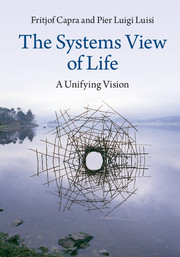Book contents
- Frontmatter
- Dedication
- Contents
- Preface
- Acknowledgments
- Introduction Paradigms in science and society
- I The mechanistic worldview
- II The rise of systems thinking
- III A new conception of life
- 7 What is life?
- 8 Order and complexity in the living world
- 9 Darwin and biological evolution
- 10 The quest for the origin of life on Earth
- 11 The human adventure
- 12 Mind and consciousness
- 13 Science and spirituality
- 14 Life, mind, and society
- 15 The systems view of health
- IV Sustaining the web of life
- Bibliography
- Index
9 - Darwin and biological evolution
from III - A new conception of life
Published online by Cambridge University Press: 05 April 2014
- Frontmatter
- Dedication
- Contents
- Preface
- Acknowledgments
- Introduction Paradigms in science and society
- I The mechanistic worldview
- II The rise of systems thinking
- III A new conception of life
- 7 What is life?
- 8 Order and complexity in the living world
- 9 Darwin and biological evolution
- 10 The quest for the origin of life on Earth
- 11 The human adventure
- 12 Mind and consciousness
- 13 Science and spirituality
- 14 Life, mind, and society
- 15 The systems view of health
- IV Sustaining the web of life
- Bibliography
- Index
Summary
Looking at life around us we notice two important general qualities. One is the constancy of form from one generation to another: roses from roses, elephants from elephants. The other is that life is characterized by an amazing variety of different species – microbes, insects, mammals, fish, birds, and flowers – and within each species, there are hundreds or thousands of different forms. All this yields the rich biodiversity of our planet. These two apparently contradictory aspects of life – constancy of form and the existence of so many different forms – make up life on Earth.
The emphasis of this chapter is on biological evolution. For a proper historical start we have to go back to the early decades of the nineteenth century, in England, to introduce the time and the work of one of the greatest scientists, Charles Darwin (Figure 9.1).
Darwin’s vision of species interlinked by a network of parenthood
At the time of Darwin, it was commonly believed that the different life forms were given, once and for all, by God’s creation. And reproduction was the way by which these forms, created by God, would perpetuate their species on Earth. To doubt the credo that the biological forms were fixed once and forever, was close to blasphemy – and this is what Darwin did.
In fact, the foundation of Darwinism is the idea that we all come from a common ancestor with modifications, and that is tantamount to saying that all living forms, from trees to fish, and from mammals to birds – since they all come from the same primordial ancestor – are linked to each other by a network of parenthood. There is nothing more holistic and systemic than this notion of Darwinian biological evolution: all living creatures are intrinsically linked to each other and form one single family. But let us proceed in order.
Information
- Type
- Chapter
- Information
- The Systems View of LifeA Unifying Vision, pp. 182 - 215Publisher: Cambridge University PressPrint publication year: 2014
